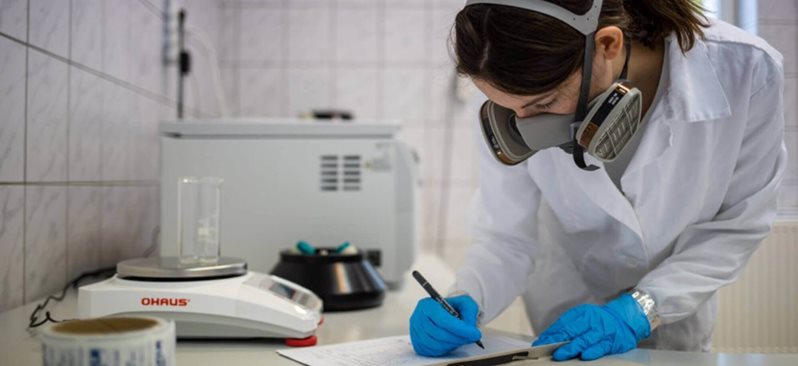
Scientists and researchers around the world are hard at work studying the
Coronavirus. As they seek to trace it, understand it, uncover treatments and a vaccine, they require precision laboratory equipment and weighing instruments. This is where OHAUS plays an important role.
The challenges created by the pandemic are numerous and far-reaching, but we remain committed to the laboratories who rely on us. We are steadfast in our focus on reliably precise products, efficient distribution, quality customer service, and, of course, safety – of our employees and customers. We’ve also been listening closely to our customers and suppliers and have been exploring product enhancements to further help support the fight against Covid-19.
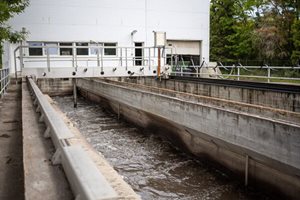 Tracking COVID-19 Through Wastewater
Tracking COVID-19 Through Wastewater
In many parts of the world, research is underway to detect the coronavirus from municipal wastewater. Earlier this year, scientists in Europe and Australia made a number of interesting discoveries by studying communal wastewater samples, and now similar work is being done in the U.S., Canada, and other countries.
The concept of testing wastewater samples from sewage is not new. It’s been done in the past to track anything from infections to drug abuse. Now they are being studied to determine the existence of COVID-19 in communities and could give advance warning of where a second wave is taking shape. These tests could serve to help communities determine in advance if they may need to take additional social prevention measures.
Specialized teams that include scientists, government officials, and water management administrators are being formed in cities throughout the world to investigate samples from local sewers. Communal wastewater is thought to be a better barometer of disease detection than traditional tests. Individual testing can require a two-week incubation period before the Coronavirus appears. However, with the urine and defecation found in wastewater, the virus can be detected after about three days.
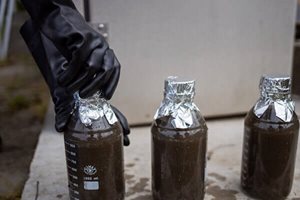
In Hungary, expert teams are conducting a multi-phase survey. In phase one, they are investigating changes in the wastewater of nine Hungarian cities over five months. The researchers take new samples every two weeks in the affected settlements. According to the researchers, analysis of wastewater can be a useful tool for tracking hot spots and signaling the re-emergence of infection.
The center of this project is the city of Nagykanizsa. MOL, one of the largest corporations in Hungary, as well as Pannon University, one of the country's largest colleges, have been supporting the research by providing free use of lab space. OHAUS has helped supply these labs with discounted precision equipment.
Testing is conducted in accord
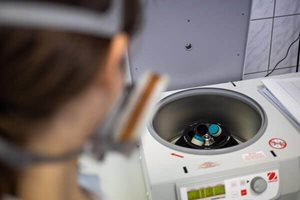
ance with strict industry and government standards, as well as World Health Organization recommendations. The primary goal is to display the RNA or DNA actually obtained from the samples. Because the useful samples are infected, laboratory safety measures are of utmost concern. In addition to scientists wearing full PPE, like gloves, hats, face shields and foot coverings, all equipment must be easy to clean and sanitize. This is a signature feature of all OHAUS scales and lab equipment and it’s our distinct pleasure to play a small, but important part in this ongoing, worldwide effort.
Continue reading to learn which OHAUS products work best in this type of lab environment.
Outfitting a Lab for Covid-19 Research
Ex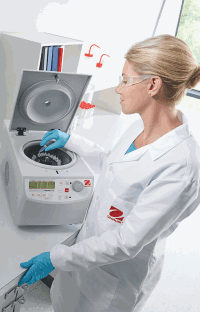 amining virus-infected samples is a delicate procedure that requires expertise and precision laboratory equipment that is easy to sanitize.
amining virus-infected samples is a delicate procedure that requires expertise and precision laboratory equipment that is easy to sanitize.
Sample preparation calls for the concentration and extraction of viral nucleic acids. For this, your lab should include a centrifuge, stirrer, incubator, shaker, and vortex mixer. A high-quality centrifuge is essential for particle separation to extract the cells you wish to examine.
OHAUS offers the Frontier line of high-quality refrigerated centrifuges, allowing researchers the ability to create reproducible results without worrying about machine wear and tear. OHAUS offers a variety of rotors, including sealed rotors to help protect users from hazardous aerosols.
To help you find the Frontier centrifuge that best meets your needs, OHAUS offers a handy product selector guide. The OHAUS Frontier FC5916R Centrifuge is powerful and versatile, offering flexibility for low and high speed applications. This is important since preparation for virus sample examination requires both low and high g force.
To demonstrate how these OHAUS instruments can support your Covid-19 research, we cite this waste water treatment experiment performed by scientists in Hungary.
Concentration and Extraction of Viral Nucleic Acids
The concentration is done by the known methods, slightly modified and adapted.
The basics of the concentration method was published by Nadan et al (2003). The water samples are
centrifuged at 3000g for 30 minutes to get the precipitate. The precipitate is re-solved in 10 ml of the supernatant. 10 ml of chloroform (Sigma, St.Louis, MO, USA) was added in 10% v/v concentration. The mixture was
vortexed and further purified by
centrifugation 3000g x 10 minutes, at 4°C.
The liquids from the first and second purification (centrifugations) were combined, and the samples concentrated by the method of Minor et al. (1985) with precipitation by Sodium-PolyethylenGlycol (NaCl-PEG) with a slight modification as follows.
 With consistent magnetic stirring, 22,2 g of NaCl (Sigma, St.Louis, MO, USA) was added to 1000 ml of waste water sample at 4°C. After solving of all NaCL, 70 g of PEG 6000 (Fluka, Buchs, Germany) was added to the sample, and stirred overnight on the magnetic stirrer.
With consistent magnetic stirring, 22,2 g of NaCl (Sigma, St.Louis, MO, USA) was added to 1000 ml of waste water sample at 4°C. After solving of all NaCL, 70 g of PEG 6000 (Fluka, Buchs, Germany) was added to the sample, and stirred overnight on the magnetic stirrer.
The next day, the samples were spun 2000g, 120minutes, at 4°C. The liquid phase was disposed and the precipitate was solved in a ratio of 1:100 in 10 ml of guainidin- tiocyanate (GuSCN) lysing buffer (Sigma, St.Louis, MO, USA). The lysis buffer was prepared by the method of Boom et al (1990) as as follows:
120g of GuSCN in 100ml of 0.1M Tris-HCL buffer (pH 6.4).
Extraction of Viral Nucleic Acids
The extraction of viral nucleic acids is done by the method of Boom et al published in 1990.
Shortly, the sediment (precitpitate) resolved in the lysis buffer was incubated at 56 °C for 25 minutes and for fixing the nucleic acid parts some silica was added (Sigma, St. Louis, MO, USA) in concentration of 0.75% v/v. The mixture was incubated maximally for 30 minutes. Then the sample was centrifuged at 11000 x g, 5 minutes, 20°C. Then the silica pellet was washed two times with 2 ml of 4M GuSCN, and then two times with 70% ethanol and finally with acetone. After removing the acetone the tubes were dried at 56°C with open lid. The separation of nucleic acids from the silica was done with 300µl of water treated with diethyl-pyrocarbonate (DEPC) , (Q-bioGene, Carlsbad, CA, USA) at 65°C for 15 minutes.
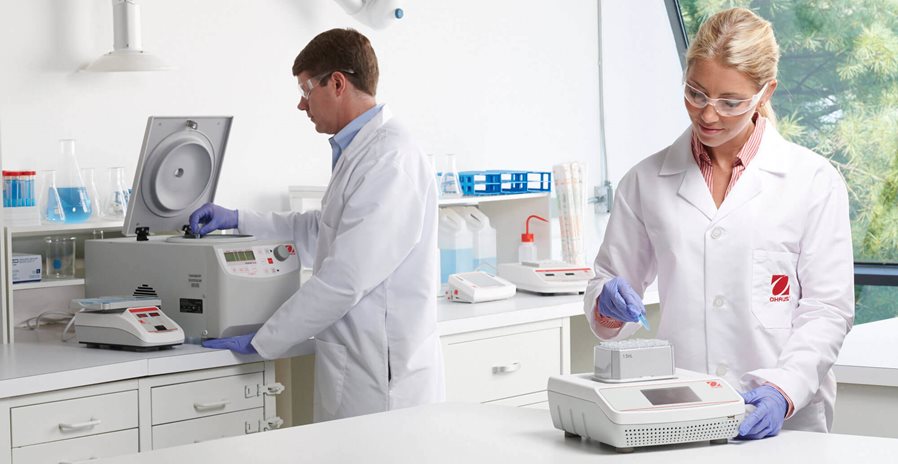 Finally the silica was centrifuged for 15 minutes, 18000g, 20°C. The supernatant containing the nucleic acids was carefully separated by suction, to avoid cross contamination with the silica matrix. Then the nucleic acids containing samples were stored at -80°C until further examination (PCR test).
Finally the silica was centrifuged for 15 minutes, 18000g, 20°C. The supernatant containing the nucleic acids was carefully separated by suction, to avoid cross contamination with the silica matrix. Then the nucleic acids containing samples were stored at -80°C until further examination (PCR test).
However long the battle against Coronavirus takes, OHAUS will be there to support scientists with precision instruments and unwavering support.
Learn More About the Featured Products: Centrifuges, Vortex Mixers, Incubating and Incubating Cooling Shakers, Hotplates and Stirrers
